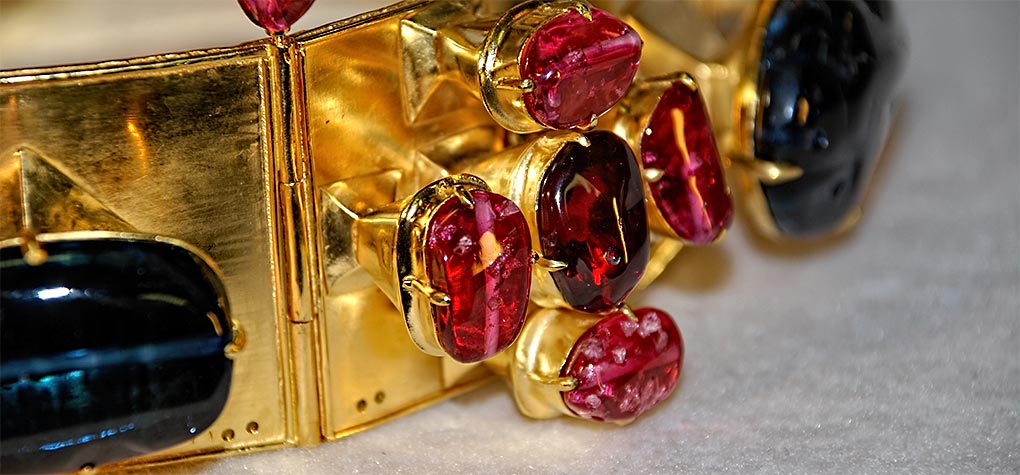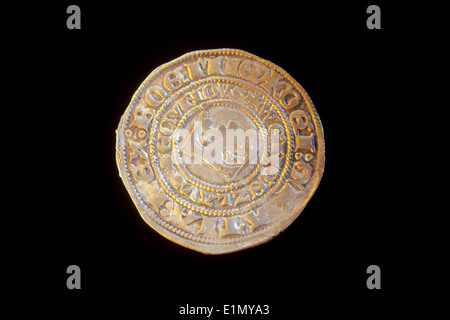Handy Tips To Plaster Prague Mint Coins
Wiki Article
How And Why Do You Use A Model Of A Plaster To Make A 3d Digital Model Of Gold Medals Or Coins?
The process involves scanning a maquette in order to create a 3-D digital model of gold coins or medals. Specialized equipment is used to capture the details and dimensions of the model into a digital version. This digital copy is utilized for various purposes during production.
3D Scanning High-resolution scanners record the physical dimensions and details of the plaster model. The scanners use a variety of techniques to record precise measurements.
Surface Information Capture - The scanner projects light or laser beams onto the model's surface. The reflections and distortions caused by these beams are captured by the scanner, capturing the model's surface details.
Data Collection- When the scanner moves over the model, it captures a huge amount of points, which creates an electronic representation of the model's geometry as well as contours and other details.
Conversion to 3D Model- The collected data points are processed by specialized software, which reconstructs the data into a 3D digital model. The model is a replica of the physical dimensions and features of the maquette of plaster.
What are the reasons for the creation of an electronic 3D model?
Digital 3D replicas are precise in replicating the dimensions and specifics of the physical models. It is essential to maintain this level of accuracy to make sure that the final design of the gold coin or medal matches the original.
Digital models are easily modified or upgraded. Designers can adjust the 3D model without altering the initial plaster model enabling iterative improvements or corrections.
Compatible with Manufacturing ProcessesCompatibility with Manufacturing Processes Digital 3D models are compatible with various manufacturing technologies like 3D printing or CNC machine and enables the creation of molds or dies for mass production.
Digital 3D models can be used to document and archive the design. They can be digitally stored to be used in the future for reference, reproduction or documentation for historical purposes.
Designers and manufacturers can employ advanced manufacturing techniques to create gold medals and coins which are exact and faithful to the original designs by scanning models of plaster and generating digital 3D models. See the best Scanning and 3D Modeling Prague Mint gold medals more advice. including gold apmex price, gold price coin today, gold coin gold, ngc grading, euro coins, 2000 dollar coin, gold penny, golden and silver, gold one dollar coin, gold buffalo and more.

Why Do Dies Used To Strike Gold Medals Or Coins Undergo Vacuum Hardening Processes?
The method of vacuum hardening is employed in the making of gold medals or coins. It involves heating the dies at high temperatures, and exposing them to controlled environments within a vacuum. Here's a brief overview of the dies for vacuum hardening.
Diets used to strike medals or coins are clean and free of contaminants.
Moving into the vacuum furnace
The dies are placed in a specially designed heat-treating chamber which can generate an atmosphere of vacuum.
Evacuation of Aircraft
The vacuum furnace eliminates the air inside the chamber to create a controlled vacuum, devoid of oxygen or other gases. This stops oxidation, and also ensures a uniform heating.
Heating Phase
The furnace is then heated to the temperature required for hardening dies. Temperatures can vary based on the material used and the process of hardening.
Drinking at high temperatures
The dies remain at the higher temperatures for a certain time, which allows the material the reach the desired hardness level and also to preserve metallurgical structures.
Cooling or quenching
Following the soaking phase after which the dies are rapidly cooled using specialized techniques. The rapid cooling process helps to lock the desired hardness in the metal.
Tempering (Optional).
In some instances, the hardening process is followed by a tempering procedure. To improve the toughness and relieve internal stress, dies could be reheated at a lower temperature.
Quality Control and Inspection
To ensure that they meet specifications for strength and hardness Die dies that have been hardened go through an extensive inspection and quality test.
Post-Treatment Handling-
The dies, following the process of vacuum-hardening is completed, can be further processed, such as polishing and coating before they are utilized in the coin striking or medal striking processes.
The process of hardening by vacuum increases the strength, durability of the dies, their wear resistance and the life of the dies used to create gold coins or medals. In creating a controlled, safe environment free from atmospheric contaminants This process guarantees the consistent and reliable hardening of dies, thereby enhancing the longevity and quality of the finished products. Follow the recommended vacuum hardening Prague Mint gold coins website tips including 1 4 oz gold coin, buy gold coins, sell gold coins, cost of silver coin, 1oz gold eagle coin, 1 oz gold, gold and silver buyers near me, $50 gold coin, silver double eagle, st gaudens gold coin and more.

How Do You Get Matte Or Textured Finishes Through The Process Of Sandblasting? And How?
This method can be used to creating specific textures or finishes that include matte, textured, or patterned surfaces, for coins or medals. The process of Sandblasting is explained.
Surface Preparation The coin is put in a cabinet or a chamber fitted with an air compressor as well as the spray nozzle. This chamber is often sealed to contain the abrasive materials used during the process.
Abrasive material selection- High speed propulsion of small particles of abrasive materials, such sand or silicon carbide or glass beads, and aluminum oxide onto the surface.
High-Pressure-The abrasive grains are propelled to the surface with compressed air or by another high-pressure system. The finish or texture is determined by the force and speed at which particles impact the surface.
Texture Creation - The impact of the abrasive particles onto the surface results in a textured or matte appearance, by altering the surface's topography. This can be used either to create a smooth surface or to create a rough texture in specific areas.
Controlled Application- Sandblasting can be controlled by intensity the duration, angle, and intensity of application to produce different textures or finishes. Different abrasives, pressure levels and abrasives produce different results.
Sandblasting - The reason it's done
Texture variations- Sandblasting permits the creation of different surface textures, or even mattes, frosted or grainy surfaces. This creates visually appealing features and distinctive characteristics to the coins or the medals.
Aesthetic Improvement- Sandblasting alters surface appearance. It diffuses light reflections and reduces the shine. This increases the visual appeal of a medal or coin. Matte finishes, for example can highlight certain features of the design by reducing glare.
Anti-glare properties - The matte or textured finishes that are created by sandblasting decrease reflection and glare, making metals and coins more pleasant to look at and more attractive.
Contrasting Elements in Design - Sandblasting is used to create contrasts between areas that are polished or textured on a coin or medal. This is done to highlight certain design features or increase the depth and dimension.
Sandblasting is customizable to produce distinctive textures or designs.
Sandblasting produces various textures and finishes on the gold coins and medals. This improves the overall appeal, appearance and aesthetics. Read the top sandblasting Prague Mint gold coins website info. including silver eagle coins, double eagle gold coin, hidilyn diaz, gold angel coin, purchasing gold bars, 10 dollar gold coin, gold coins, ancient coin, 1979 gold dollar, 1 0z gold price and more.

How Does Gold Get Into The Coin Presses, And Then Stamped Under High-Pressure During Minting?
During the coining process the gold blanks are loaded into coin presses under intense pressure. Then, they are stamped to produce finished medals or coins. This is a brief overview of loading blanks.
The loading of gold blanks into a feeder connected to the coin press takes place after they have been prepared, examined and graded. The feeder system is responsible for maintaining a continuous flow of blanks to the machine.
Feeding Blanks Through the Press
The system of feeding is designed to guide the blanks one at a time into the striking chamber. This allows for precise positioning of the blanks.
Alignment and Positioning
Within the press, the blanks are aligned and placed in the chamber for striking making sure that they are perfectly centered and oriented for the stamping process.
Strumping in High Pressure
The coin press uses two dies: one stationary and the other one moves. The stationary coin die gives negative images of the design. While the die that moves is used as a hammer to strike the blank, the stationary die also contains the positive impression.
The moving die transfers the design of the blank to its surface with a great deal of force. The pressure exerted by the dies stamps the design on the blank and creates the relief that is raised as well as specifics on the coin or medal.
Repeated Striking (Optional)-
To produce an image or design that is clearer and better defined, multiple strikes may be applied on premium coins or editions of collectibles. Each strike helps to refine the surface characteristics of the coin or medal.
Ejection and Collection
The coins or medals will be released and placed into containers or trays once they've been struck. They are then inspected to ensure quality control and make sure that the designs are in line with all standards and criteria.
Post-Processing-
If the mint requires it, they could apply additional procedures, such as edge lettering, reeding of the edges, or post-strike treatment.
The process of stamping gold blanks using high-pressure is essential as it transfers the desired design to the blanks of gold. Then, they are transformed into finished coins or medals ready for collection, circulation or commemoration. This process demands precision as any deviations in pressure or alignment could alter the appearance and performance of the end product. Take a look at the most popular minting Prague Mint gold coins more examples. including buy gold biscuits from bank, krugerrand, 1 0z gold price, 1975 gold penny, saint gaudens double eagle, 2000 gold dollar, silver bars for sale near me, 1 oz gold buffalo coin, silver price jm bullion, silver double eagle and more.
